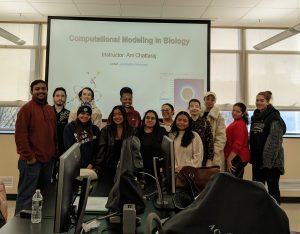CCAM has organized two scientific meetings this October: the The 22nd International Conference on Systems Biology (ICSB2023) October 8-12 co-chaired by Pedro Mendes and Ion Moraru, and the “Computational Modeling in Biology” Network (COMBINE) workshop 2023
October 5-8 organized by Michael Blinov and Ion Moraru. Both VCell and COPASI were highlighted at the meetings with tutorials, posters, and multiple models presented that were developed with these tools. CCAM students Milda, Siyu, Rudradeep, and Jinhong helped with organization, working at registration and presenting CCAM at a recruitment table.
